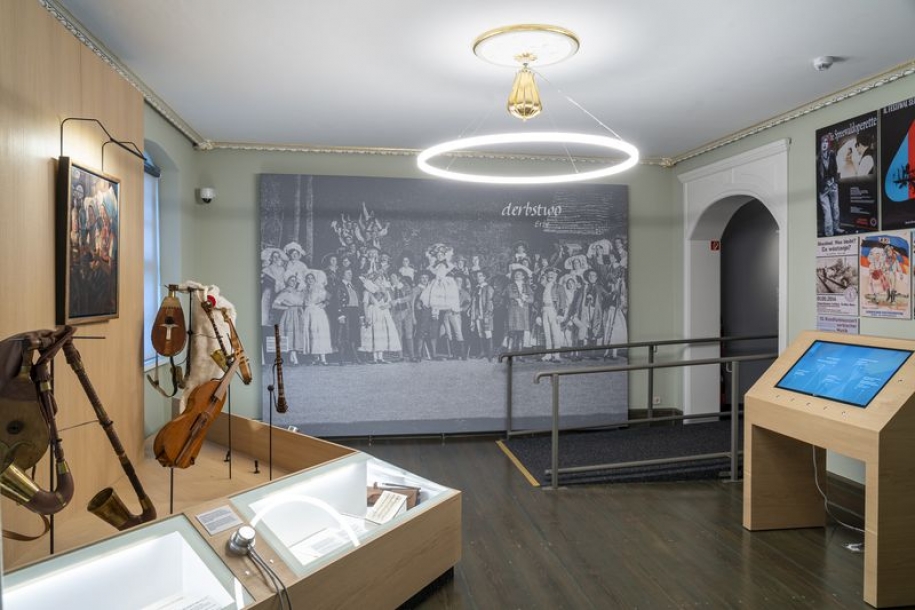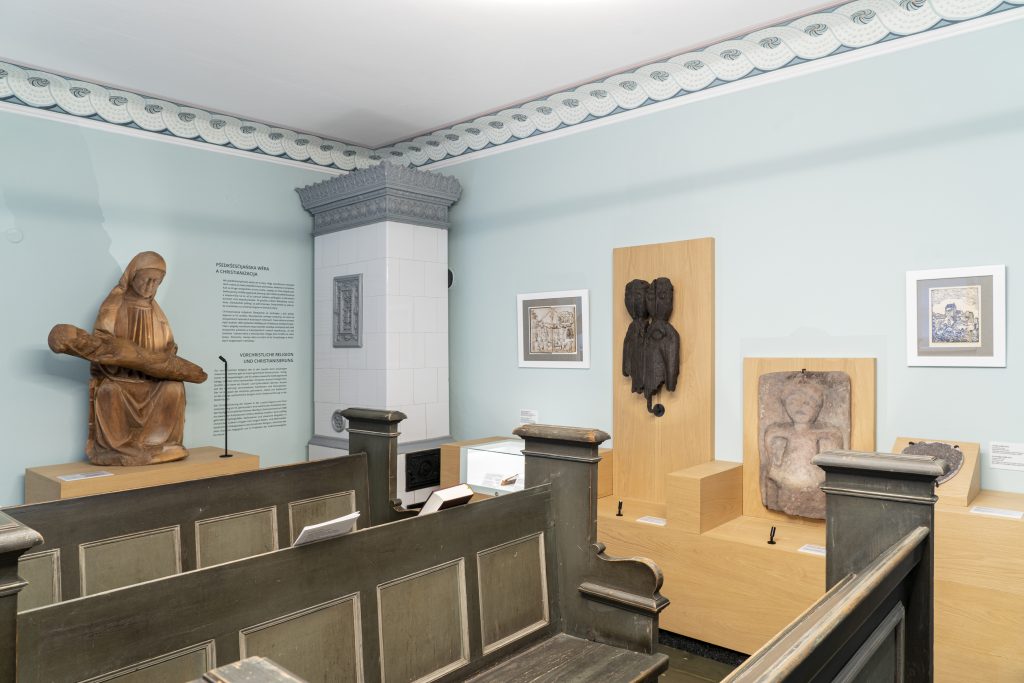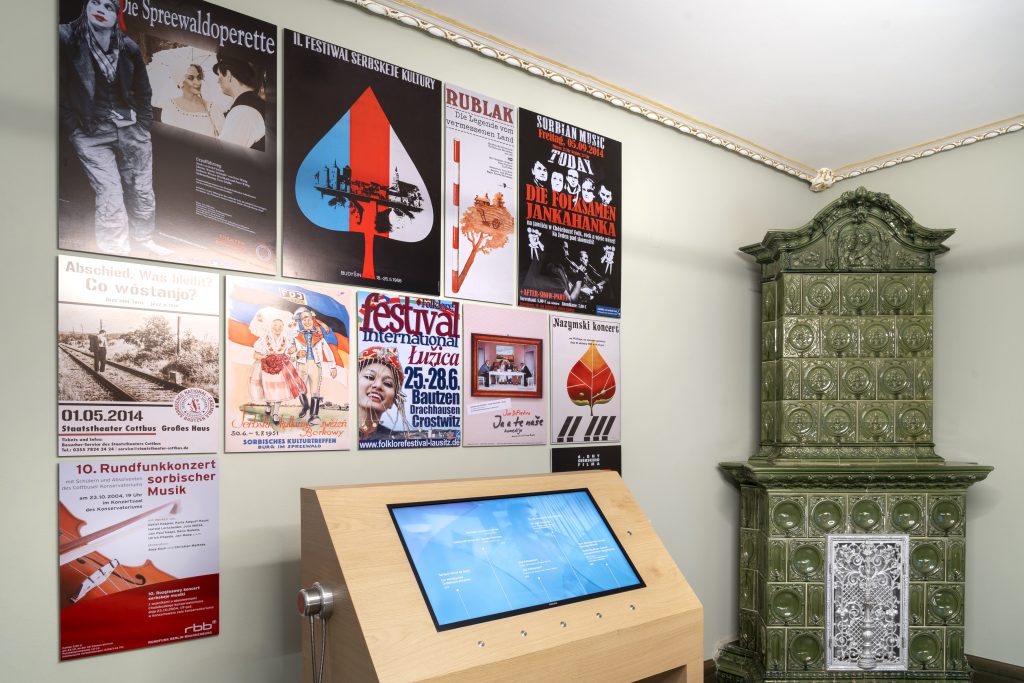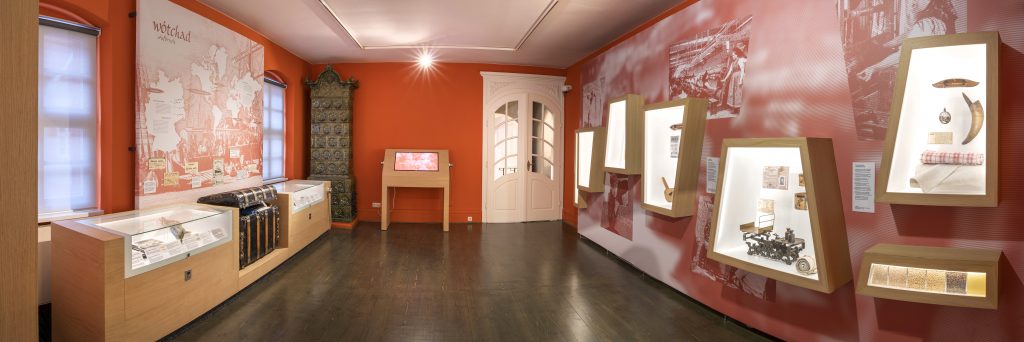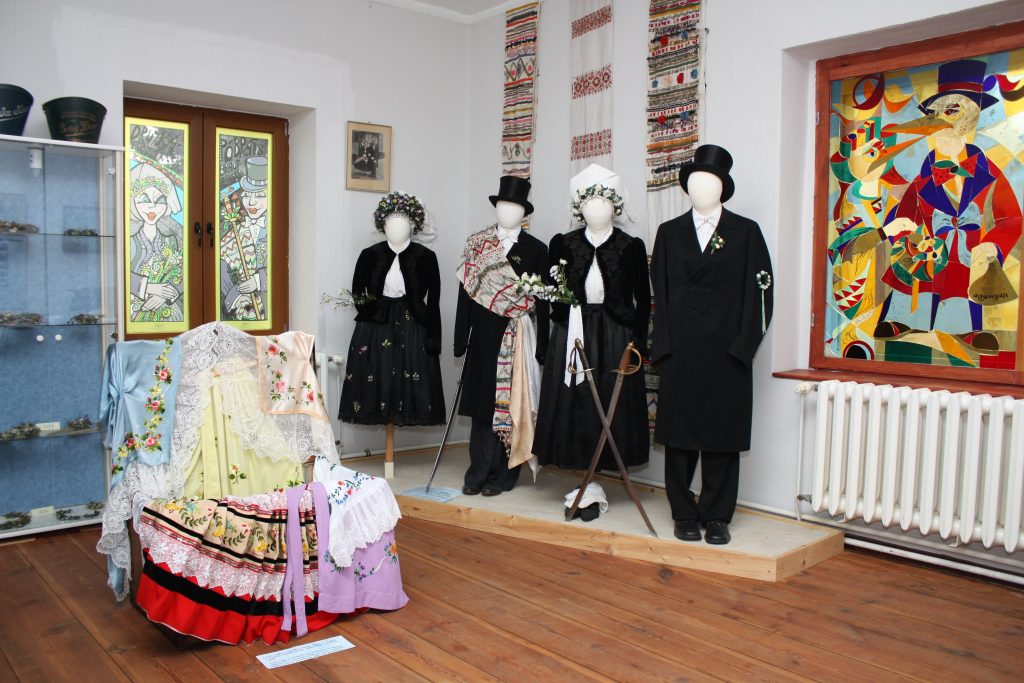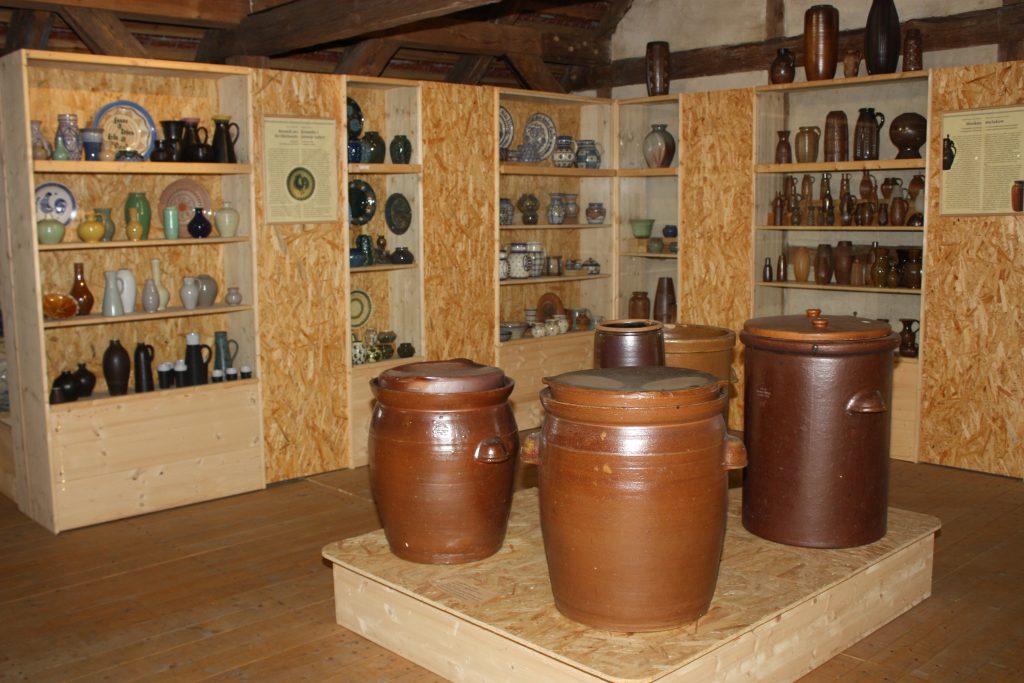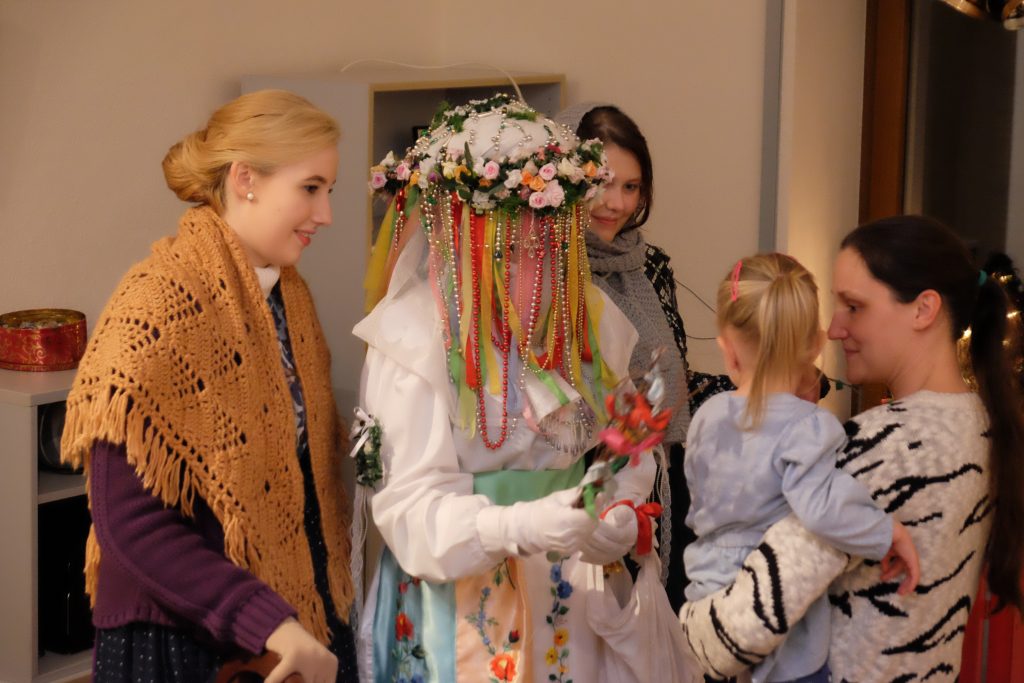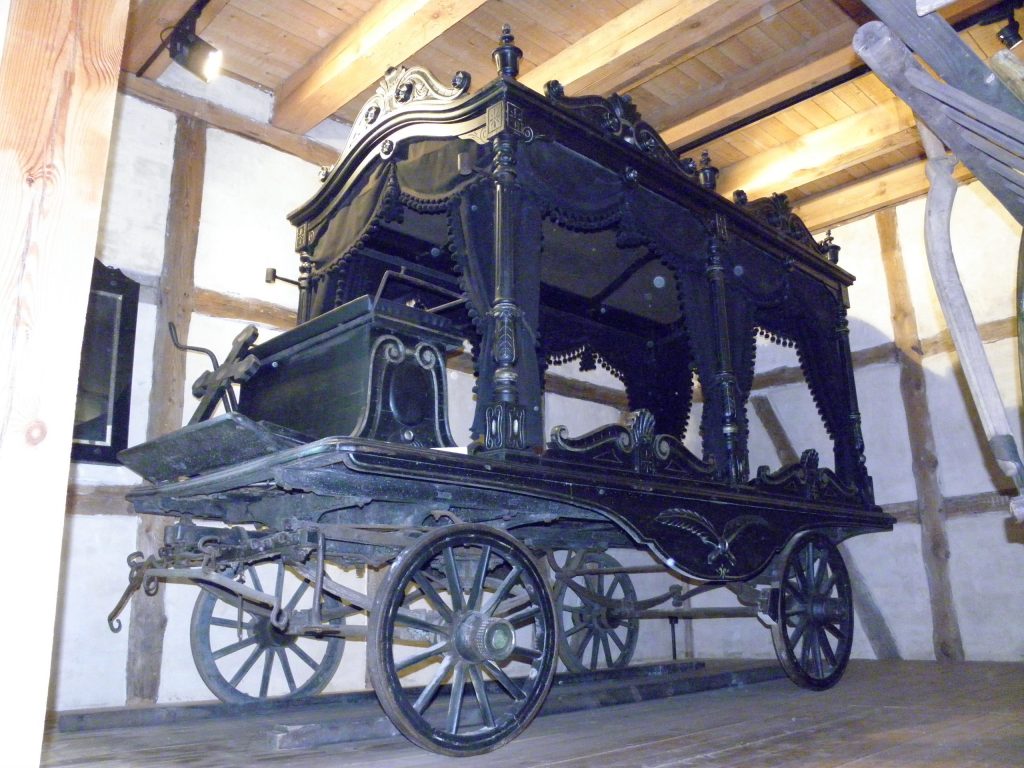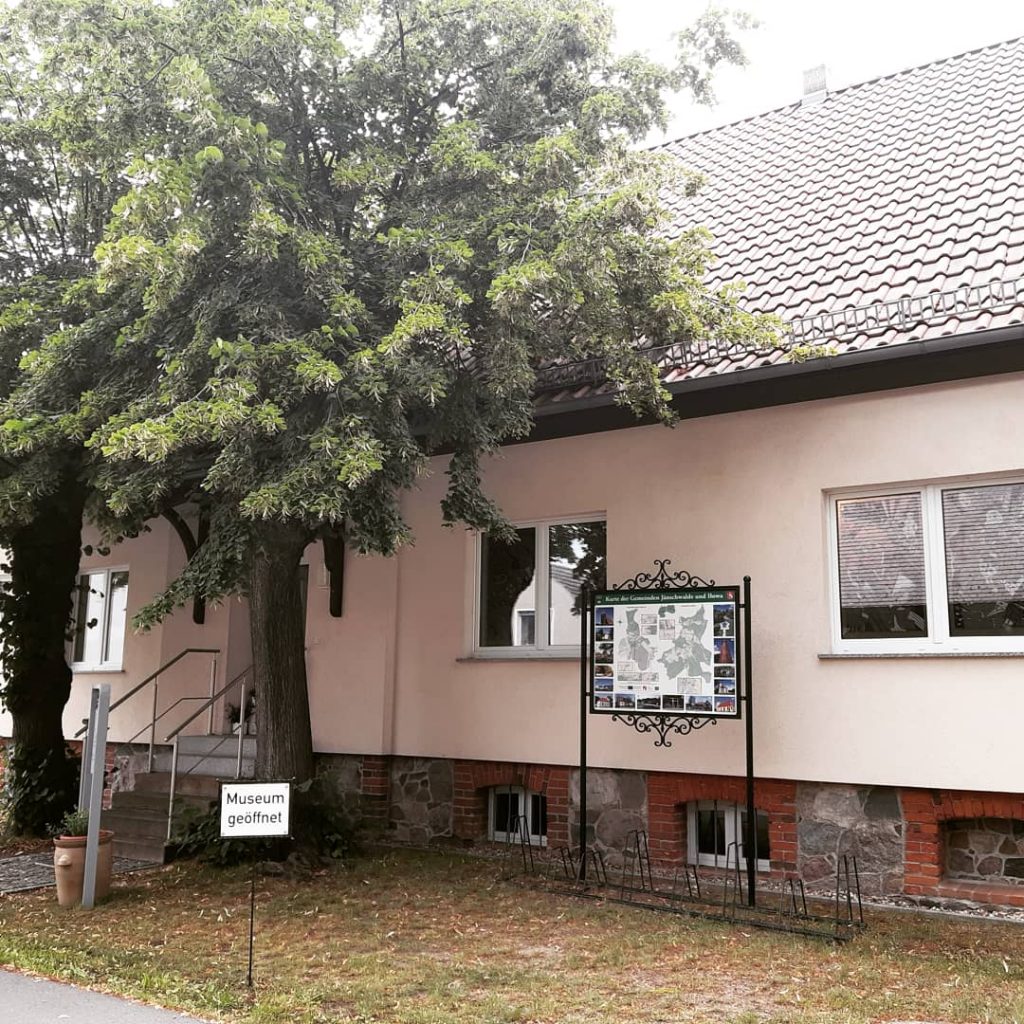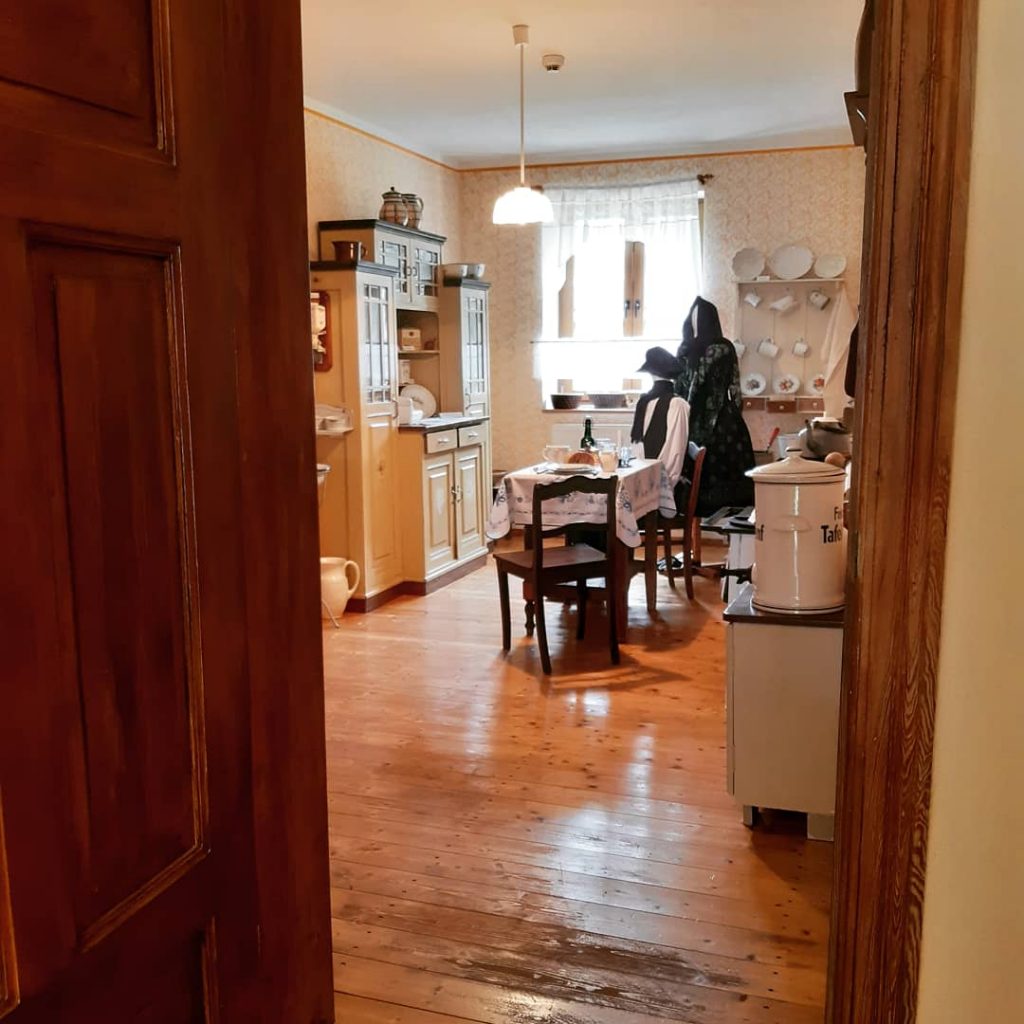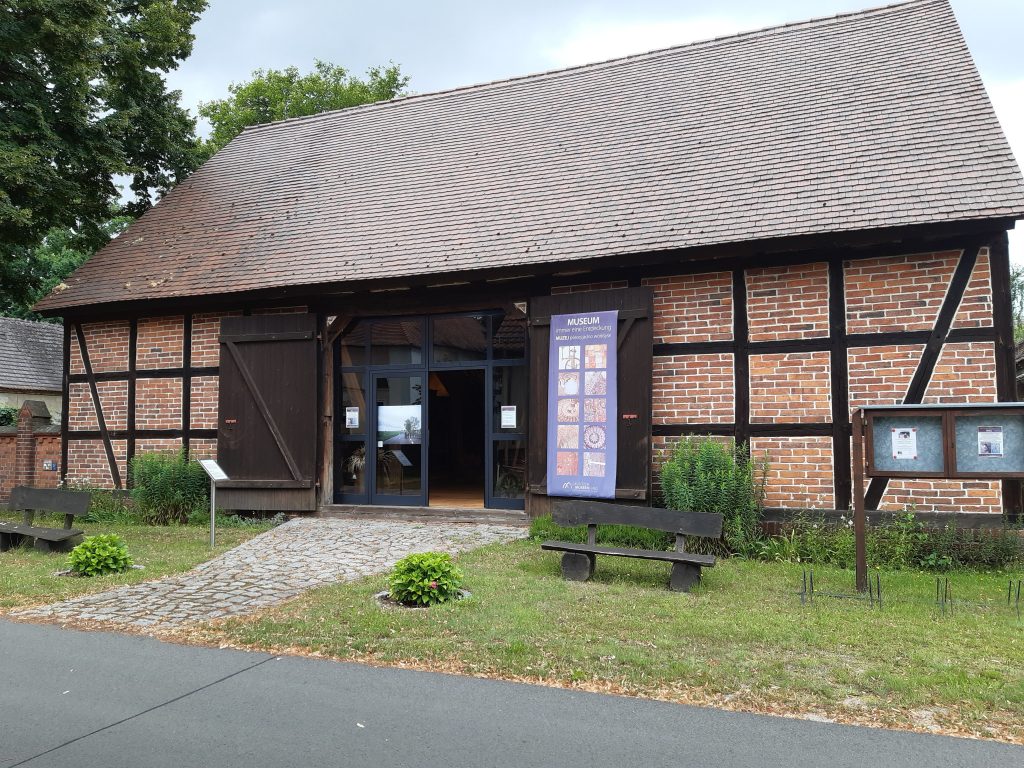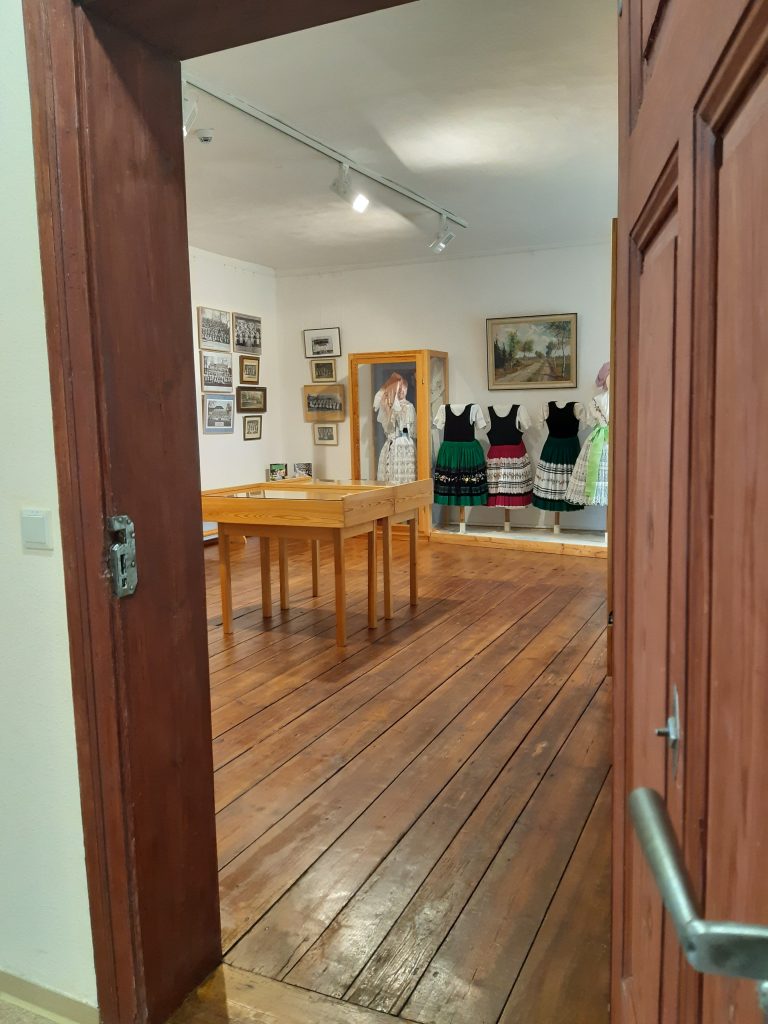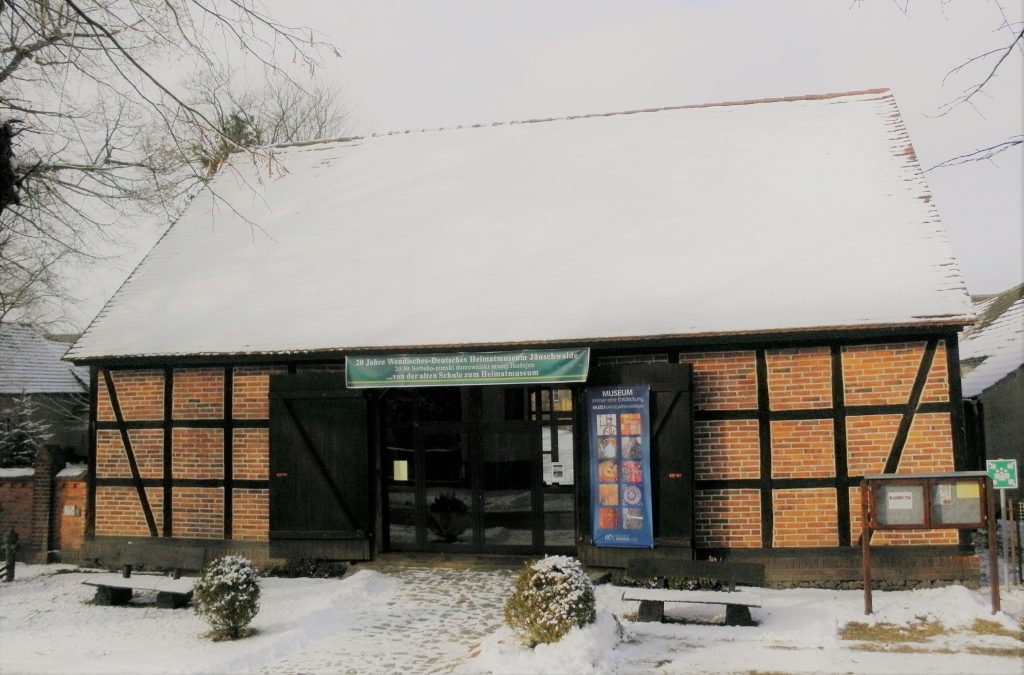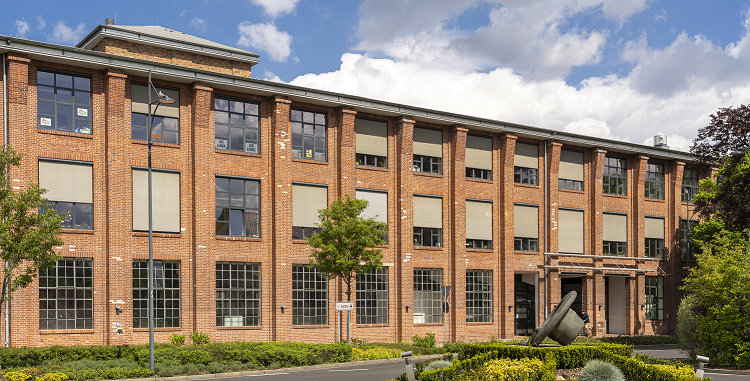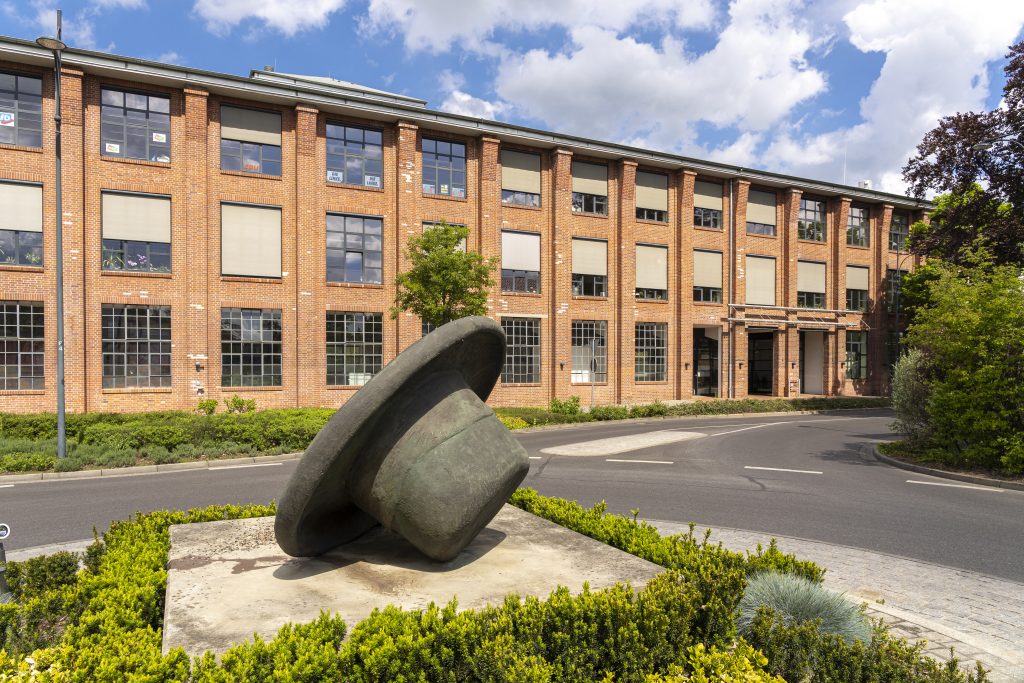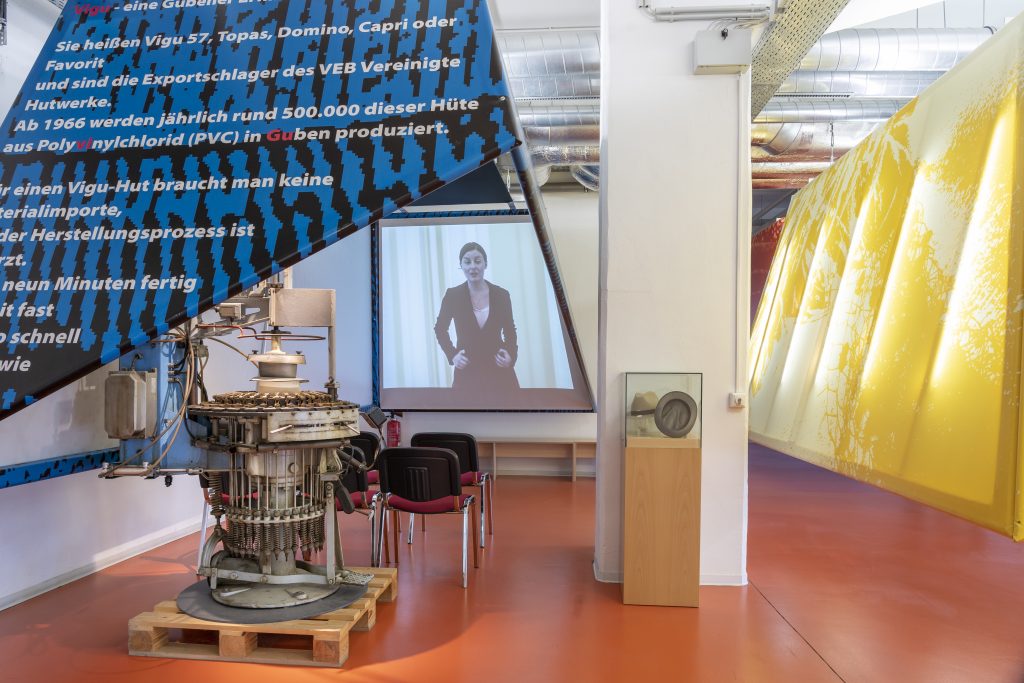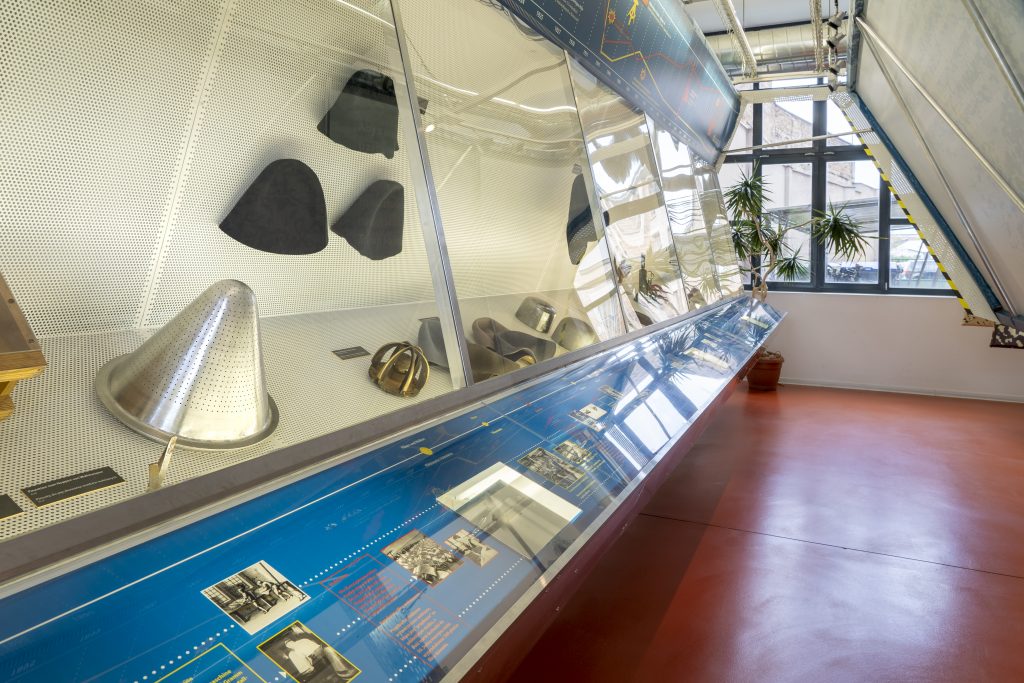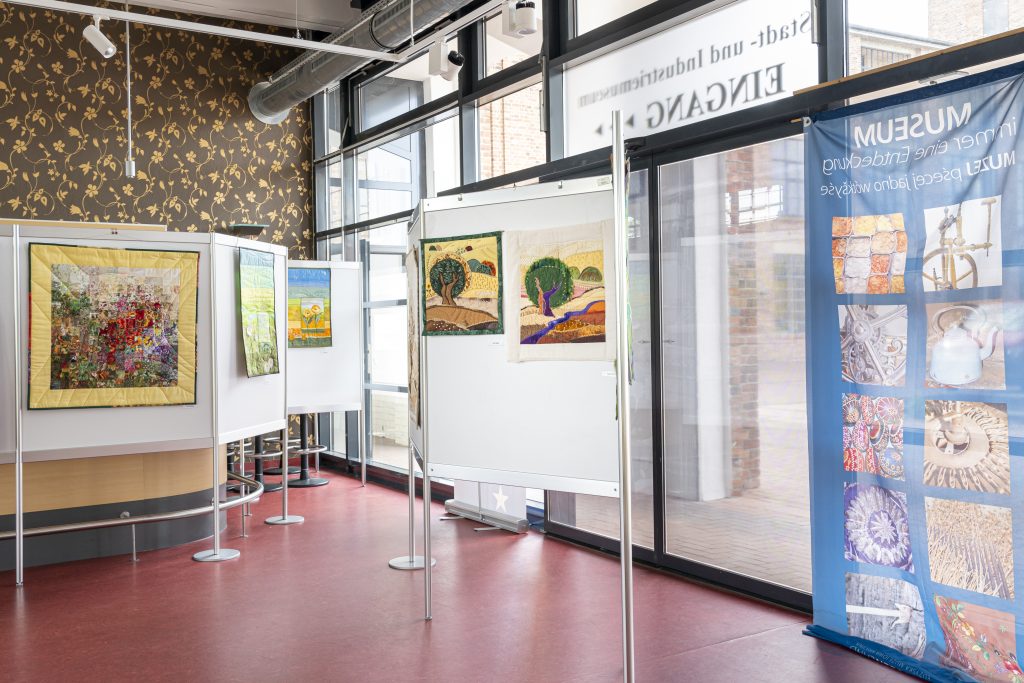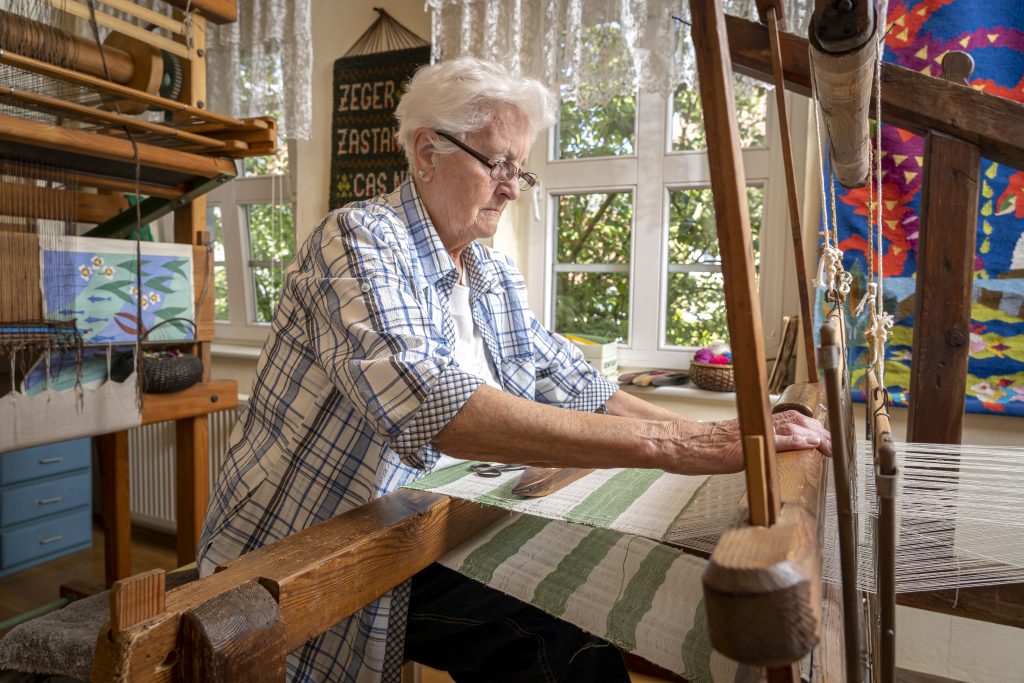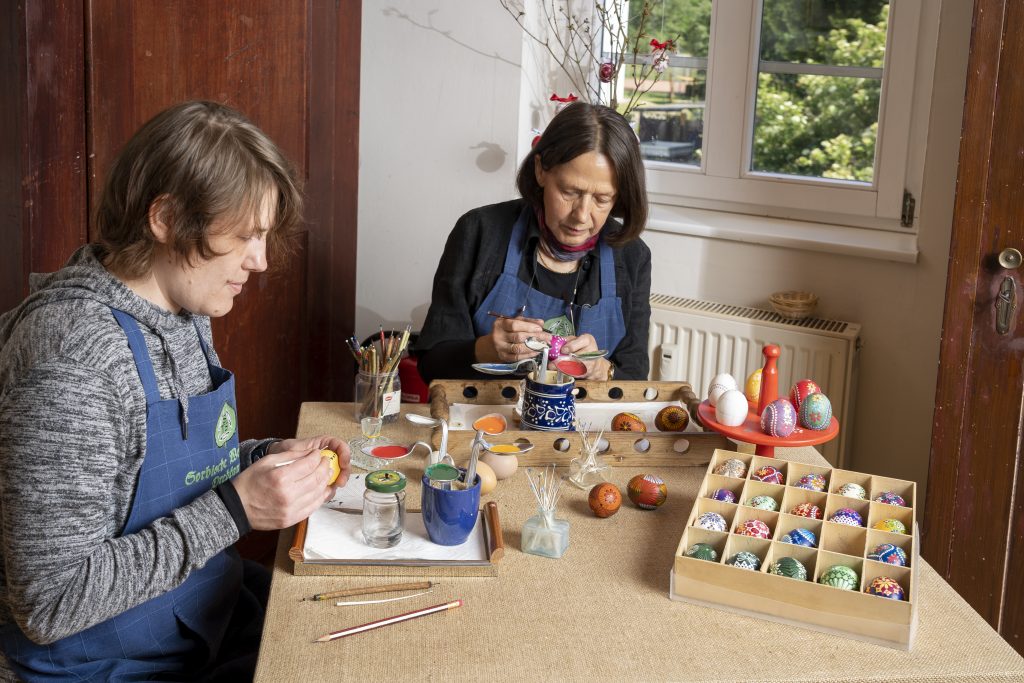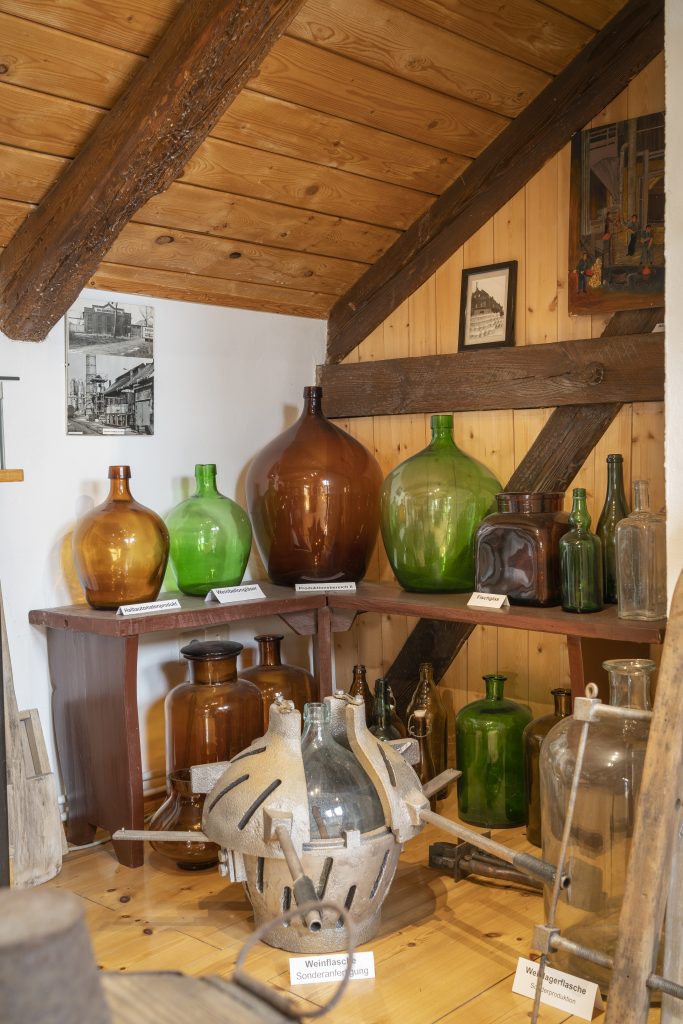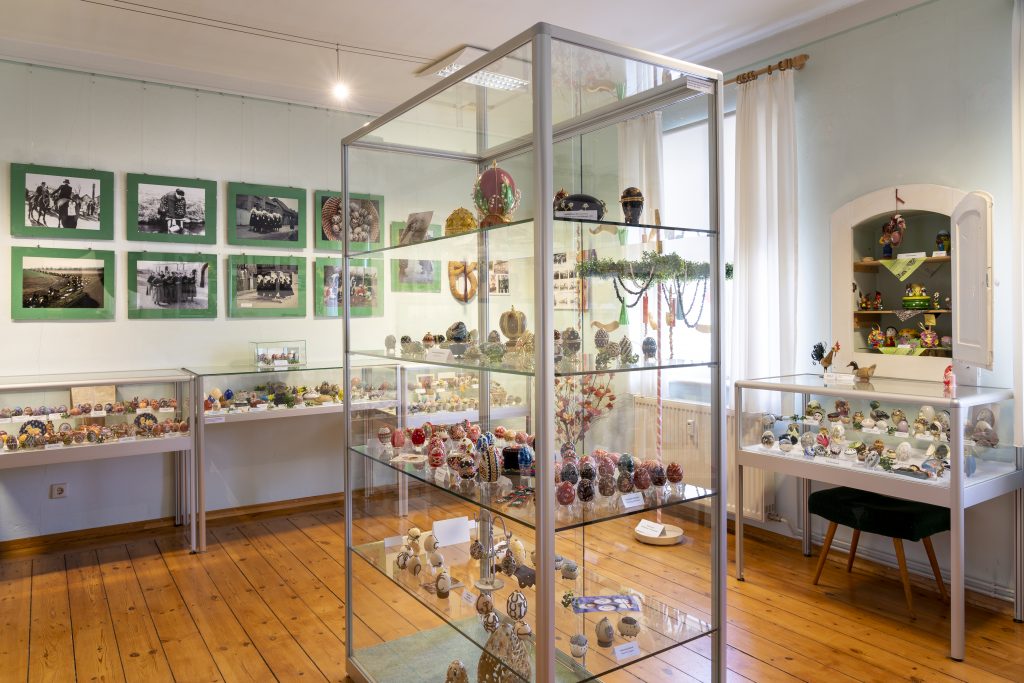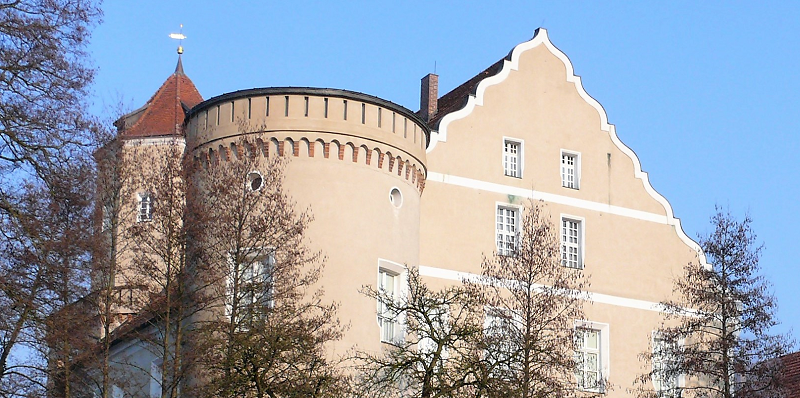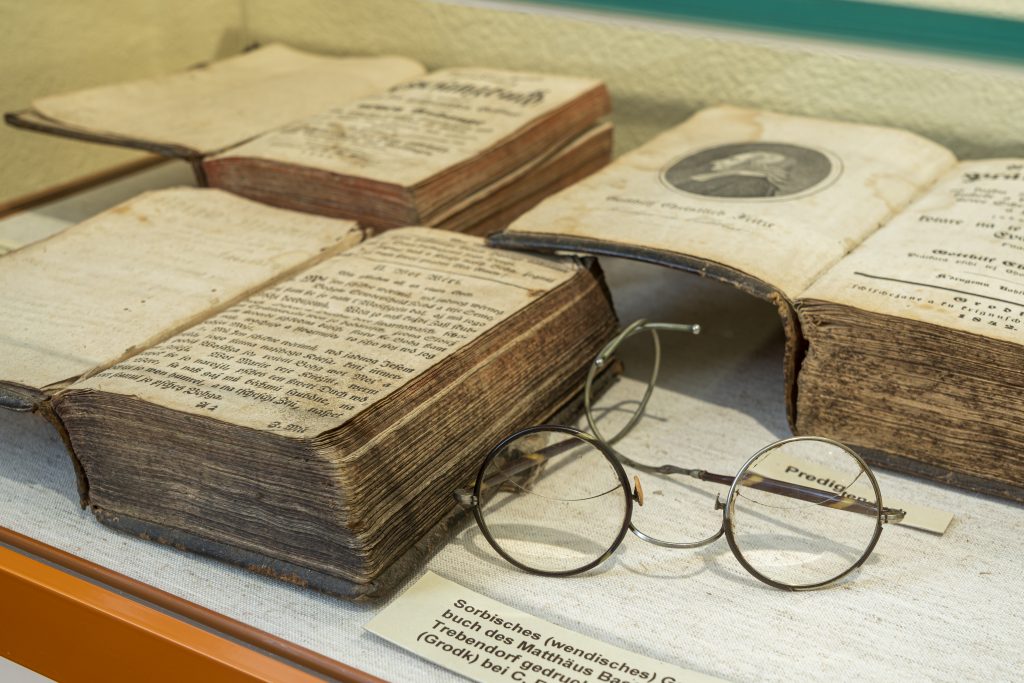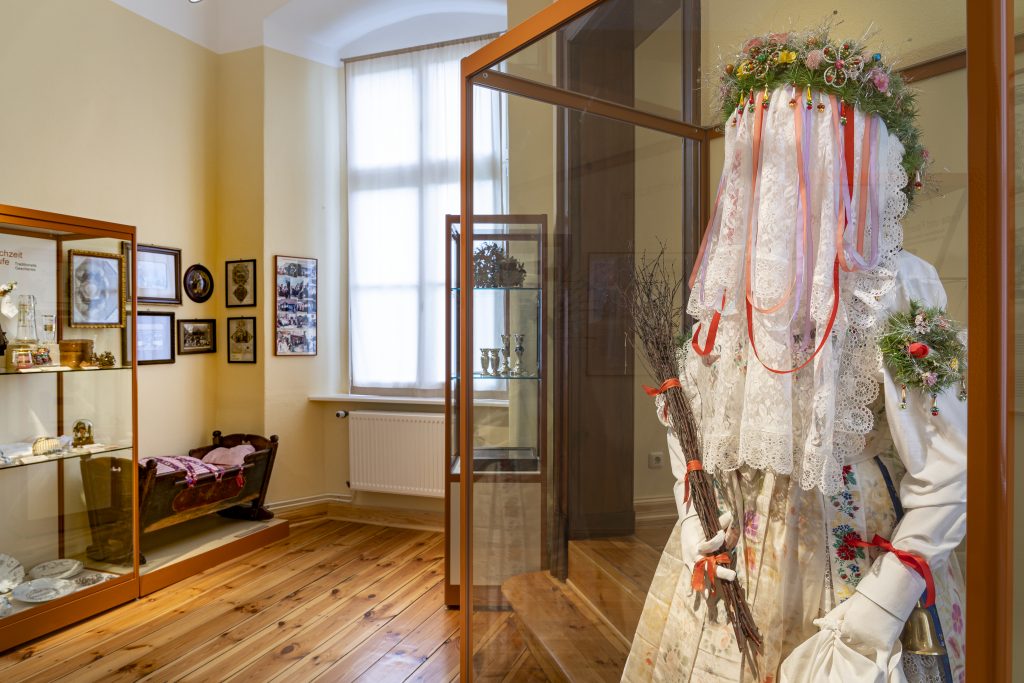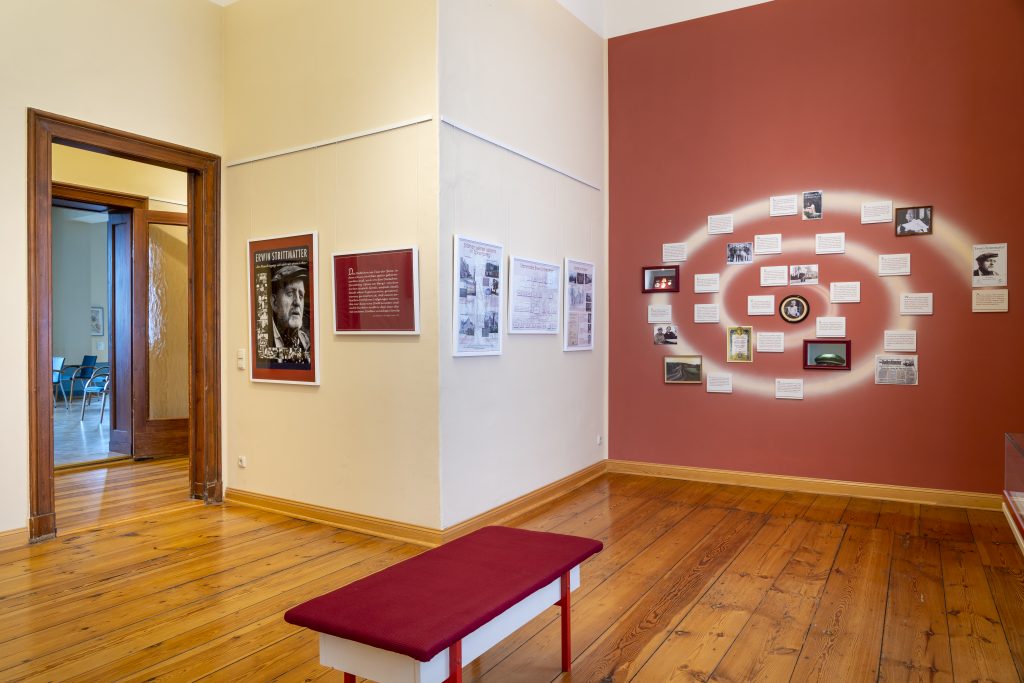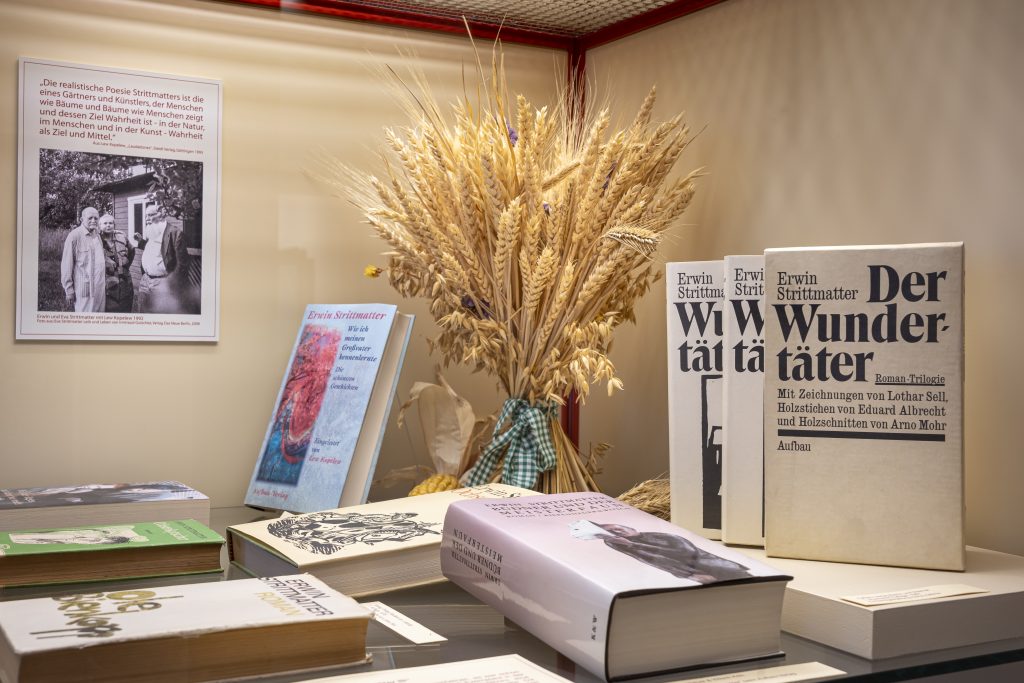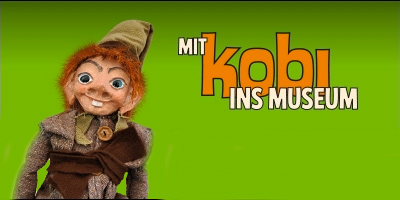Gallery | Exhibitions | Offers for children
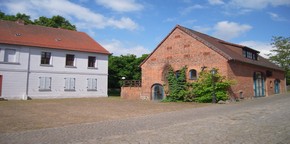
Technical monument with exhibition on urban and regional history
Building / plot situation
The museum is located on the site of the old water mill in the district of Altsprucke on the Schwarze Fließ. The river used to drive seven such water mills on its course from Bärenklau to where it flows into the Neisse. Until 1900, the mill was driven by a water wheel, then by a turbine. The mill was in operation as a feed grist mill until the end of the 1960s. After several fires, the listed mill was rebuilt as a museum from 1980 onwards, while preserving the substance worthy of preservation, especially the mill technology. Since 1985, the building has housed not only the technical monument of a water mill but also an exhibition on the history of the town. Since then, the museum in the Sprucker Mill has made an important contribution to the preservation of the objective cultural heritage and to the research of local history.
Characteristics
The historic mill in Guben has been preserved as a museum display. Inside, in addition to various grinding gears, it shows a grinding platform with a grist mill and roller mills from the 19th and 20th centuries.
The permanent exhibition was redesigned in 1996. At the same time, the outdoor facilities were reconstructed and the barn on the grounds was converted into an attractive exhibition and event venue. An important focus of the museum's exhibition is the cultural history of the town of Guben. The local history museum provides information on five chronological phases:
- early historical development,
- medieval city history,
- Rise to an important industrial and garden city in Lower Lusatia,
- role as an important location for the hat industry in Germany,
- City history.
The exhibition offers an excursion into the folk art of the region. Rural furniture, domestic utensils and handicraft products give an insight into the life of the inhabitants.
Events, special exhibitions
After registration with the Guben registry office, wedding ceremonies can be held on the mill floor. Schools and vocational training institutions benefit from special guided tours. The old classroom integrated into the permanent exhibition is used for report cards and at traditional class reunions as a backdrop and display object. In the adjacent museum barn, hobby artists and associations can hold special exhibitions and events.
Offers for children - With Kobi to the museum
Kobi - the little house ghost - is at home in the museum. There he lives in the slipper under the stove. At midnight he eavesdrops on the old museum pieces when they tell stories about the past. He tells these exciting stories to the museum staff, who then tell them to the children - stories from the old, old days.
Kobi offers:
1. the life of the people of that time
In the historical classroom and in the "old kitchen" of the local history museum "Sprucker Mühle", the pupils are explained and shown how and under what conditions they used to learn and live in former times. At the same time, a reference to the "here and now" is established.
The programme takes place indoors and is aimed at preschool children and pupils in grades 1 to 6.
Dates: by arrangement
Pre-registration: at least 2 weeks in advance
Duration: approx. 45 minutes
Group size: up to 25 people
Admission per person: € 1.00 to € 2.00 (Guben day-care centres and schools have free admission)
A fee of €20.00 per group is charged for guided tours.
Local history museum "Sprucker Mühle
2. school days - past and present
In the historical classroom of the local history museum "Sprucker Mühle", the pupils are explained and shown how and under what conditions learning used to take place. At the same time, a reference to the "here and now" is made.
The programme takes place indoors and is aimed at preschool children and pupils in grades 1 to 6.
Dates: by arrangement
Pre-registration: at least 2 weeks in advance
Duration: approx. 45 minutes
Group size: up to 25 people
Admission per person: € 1.00 to € 2.00 (Guben day-care centres and schools have free admission)
A fee of €20.00 per group is charged for guided tours.
Local history museum Sprucker Mühle
3. report card issue
Project day at the local history museum "Sprucker Mühle" Guben
The class teacher hands out the certificates in the historic classroom of the local history museum "Sprucker Mühle". During a guided tour of the local history museum, the pupils learn many interesting facts.
The offer takes place indoors and is aimed at schoolchildren.
of classes 1 to 10.
Dates: by arrangement on the day the report is handed out
Pre-registration: at least 2 weeks in advance
Duration: approx. 45 minutes
Group size: up to 25 people
Admission per person: € 1.00 to € 2.00 (Guben schools have free admission)
A fee of €20.00 per group is charged for guided tours.
Local history museum "Sprucker Mühle
4. from grain to flour
In the historic water mill of the local history museum "Sprucker Mühle", the grinding of grain (corn) into flour is explained and demonstrated. After the guided tour, the pupils have the opportunity to grind grains into meal themselves on an old grating mill in historical clothing (manual work).
The programme takes place indoors and is aimed at preschool children and pupils in grades 1 to 5.
Dates: by arrangement
Pre-registration: at least 2 weeks in advance
Duration: approx. 45 minutes
Group size: 6 to 25 people
Admission per person: € 1.00 to € 2.00 (Guben day-care centres and schools have free admission)
A fee of €20.00 per group is charged for guided tours.
Local history museum "Sprucker Mühle
5. easter customs
Easter customs from the region are explained to the children and pupils (Easter water, Easter bread, Easter bonfires and the like).
Woppeln and Waleien are introduced and performed together.
These working materials must be brought along:
per child:
- five single cent pieces
- two hard-boiled Easter eggs
The programme takes place indoors and outdoors and is aimed at pre-school children and pupils in grades 1 to 6.
Dates: by arrangement
Pre-registration: at least 2 weeks in advance
Duration: approx. 45 to 90 minutes (depending on age and size of group)
Group size: 6 to 25 people
Admission per person: € 1.00 to € 2.00 (Guben day-care centres and schools have free admission)
Local history museum "Sprucker Mühle
6. self-designed Easter eggs
Using a variety of techniques, eggs are designed into colourful Easter eggs under guidance.
These working materials must be brought along:
Hard-boiled eggs (by arrangement)
The programme takes place indoors and outdoors and is aimed at pupils in grades 1 to 7.
Dates: by arrangement
Pre-registration: at least 1 month in advance (long-term registration, as the offer is run by third parties).
Duration: approx. 45 to 90 minutes (depending on age and size of group)
Group size: 6 to 25 people
Admission per person: € 1.00 to € 2.00 (Guben schools have free admission)
Contribution towards expenses per person (for material or similar): € 2.00 to € 4.00
Local history museum "Sprucker Mühle
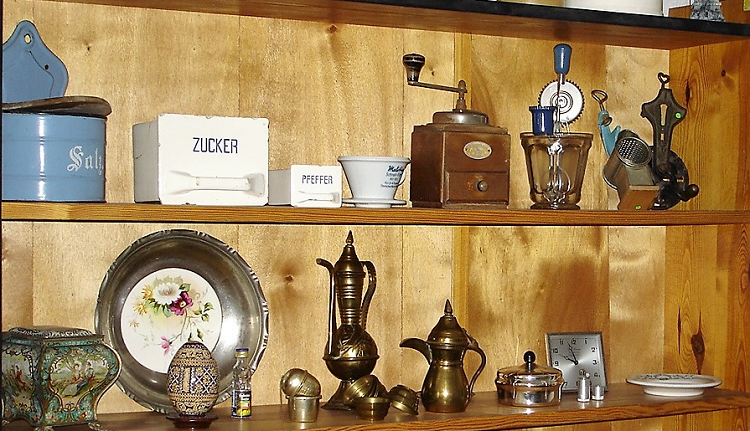 Domicile of the local historians
Domicile of the local historians






